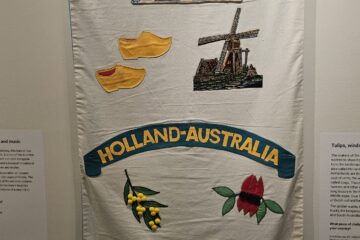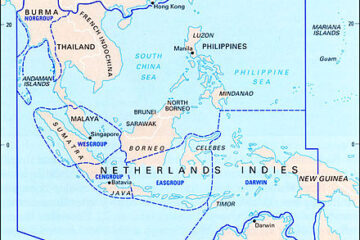Henry Leonardus van den Houten (1801-17 February 1879), was a Dutch-Australian painter, lithographer and art teacher.
He was the son of Hendrik van den Houten and Anna Maria Goutier. He received his artistic education at the Royal Academy of Fine Arts in The Hague, where he studied under the Dutch painter Bartholomeus Johannes van Hove. Van den Houten later became a member of the Pulchri Studio, an artists’ society based in The Hague that was founded in 1847.
After completing his studies, Van den Houten worked as a portrait and landscape painter in the Netherlands. He exhibited his work at various exhibitions in Amsterdam, The Hague, and Rotterdam, and received critical acclaim for his paintings.
He lived in Leiden during the 1820s and 1830s, and it was there that he first began to paint landscapes. He was particularly drawn to the Dutch countryside around Leiden, which he depicted in his paintings with great attention to detail.
While in Leiden, van den Houten also became associated with a group of artists known as the Leiden Romanticists. They were interested in painting scenes from everyday life, as well as landscapes and historical subjects, and they had a significant influence on van den Houten’s early work.
He was married twice. His first marriage was to Johanna Maria van der Poorten in 1825, with whom he had four children. After his first wife’s death in 1835, he married Christina Henrietta van der Valk in 1838, with whom he had another six children.
Van den Houten’s early works show the influence of the Dutch Romanticism movement, which was characterised by an interest in the natural world and a fascination with the sublime. Later in his career, he began to experiment with a more naturalistic style, which he further developed in Australia.
At the height of the Goldrush in Victoria n 1853, Van den Houten and his large family migrated to Australia. However, he worked on the goldfields with little success. In 1855 then the Board of Education appointed him a teacher of elementary drawing at suburban schools in Melbourne on an annual salary of £300. He later taught at Scotch College, Melbourne. He quickly became well known for his paintings of the Australian bush, which he depicted with great accuracy and attention to detail.
He also became a prominent figure in the arts community. He was a founding councillor of the Victorian Academy of Arts, and was also involved in the establishment of the National Gallery of Victoria. He exhibited his works widely, including at the Victorian Exhibition of 1854, and his paintings were highly regarded for their technical skill and realistic depictions of the Australian landscape.
He was a strong advocate for art education, and believed that art was an essential part of a well-rounded education. Roberts and McCubbin were among Van den Houten’s students, and they both later became influential figures in the Australian art scene. Under Van den Houten’s tutelage, Roberts and McCubbin developed their skills in painting and drawing, and were introduced to European painting techniques and styles.
His work was also displayed at the Victorian Intercolonial Exhibition in 1875.
Van den Houten’s teaching style emphasized the importance of observing nature and capturing the essence of the landscape. This approach influenced Roberts and McCubbin’s later work, which was characterized by a deep appreciation for the Australian landscape and a desire to capture its unique qualities.
He died died on 17 February 1879 ‘after a long and painful illness’ and was buried in the St Kilda Cemetery.


















See also:
Jan Hendrik Scheltema Dutch-Australian Painter (1861-1941)
Jacob Carabain Dutch-Belgian artist living painting in Melbourne – 1885
See also:


